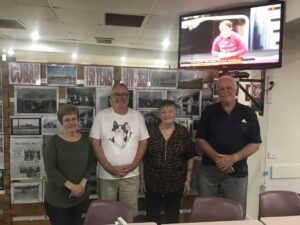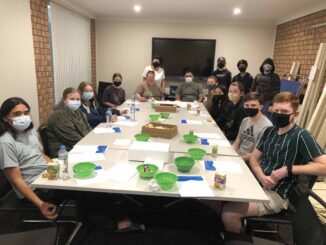
Local resident Jill Weaving heads up a new committee which was formed on Sun-day to raise funds to restore the graves of a couple of well-known ‘local icons’.
Jill told The Cobar Weekly the idea to form the committee came up in a social media chat regarding the lack of a headstone for former Cobar resident, Kate McKenzie who is buried at the Cobar Cemetery, and John Kowalski (or Johnny the Balt as he was more commonly known) who is buried in an unmarked grave in Orange. Neither had any family to speak of.
Local historian John Collins has been re-searching both of these Cobar “characters” for his next book and provided some background about the pair.
Johnny the Balt is reported to have arrived in Cobar in around 1949 as a displaced person following WWII. He was one of hundreds of Baltic men in the western area at the time working on the railway line, at the New Occi-dental Mine (like Johnny) and also employed by graziers.
“Johnny wasn’t the only Cobar worker with the nickname ‘The Balt’ after his Christian name,” John Collins said.
John’s research shows that Johnny suffered terribly during the war (including being a pris-oner in a Nazi concentration camp where he saw his parents die) and was a victim of post traumatic stress disorder (PTSD). He was a hard worker, a gifted artist and also a drunk which landed him in jail on many occasions.
Johnny was a sad person who was both loved and pitied and never hurt anyone but himself.
He died in the late 70’s after being sent to Bloomfield Psychiatric Hospital in Orange “to dry out and have psychological tests”.
John Collins described Kate McKenzie as being “very eccentric” and an “intimidating little lady”.
It’s reported she never married and became a loner who walked the streets always in a brown overcoat and a black hat. She carried a stock whip, which John reports “she was not afraid to use on children who went out of their way to annoy her”.
She was always admitted free to picture shows, balls, dances and football matches “to keep the bloody kids in line”.
When she died in January 1964, she was Cobar’s oldest resident at that time.
Jill said the committee is hoping to raise enough money through donations so that the pair will have fitting monuments to remember their colourful lives.


